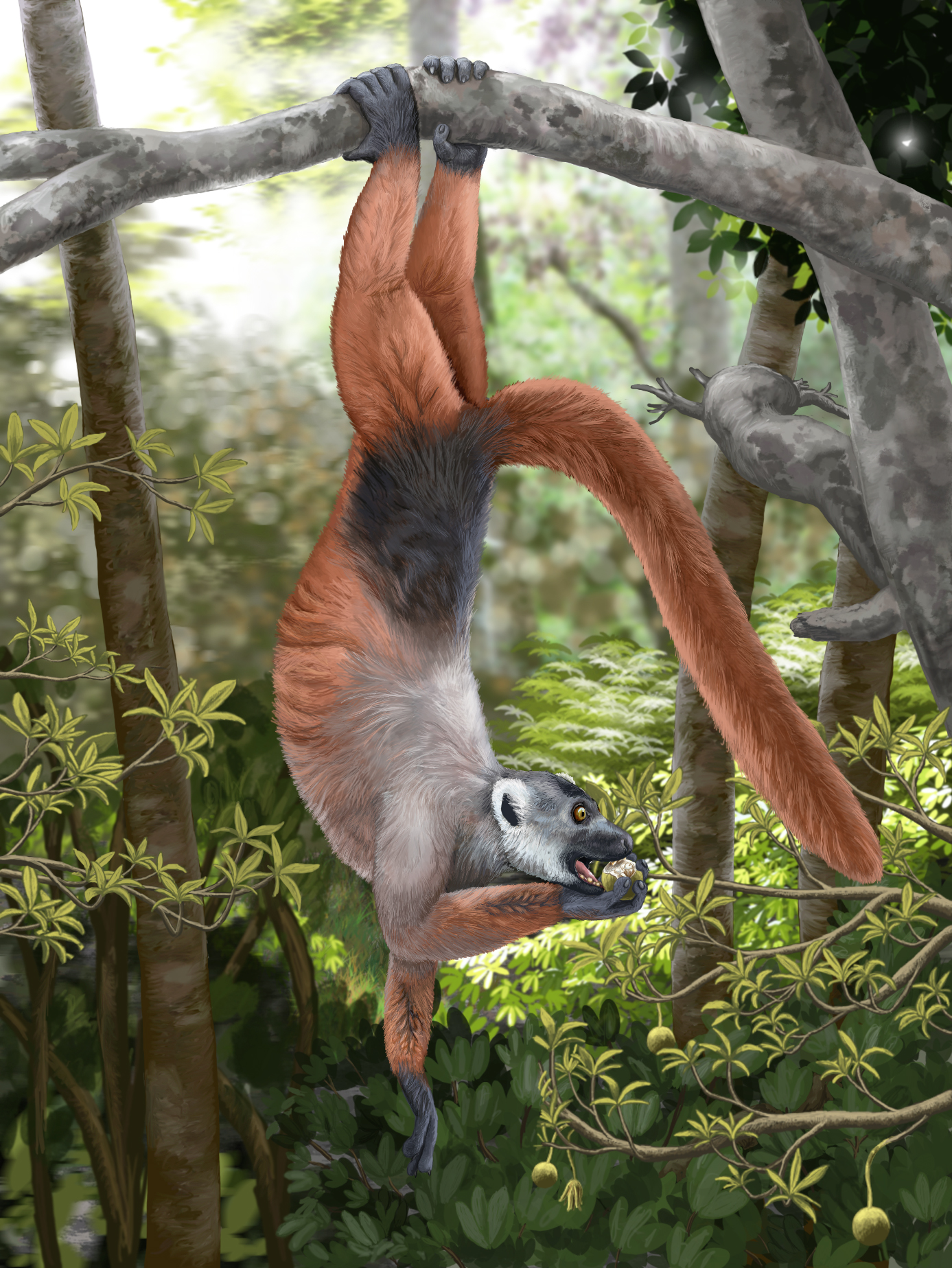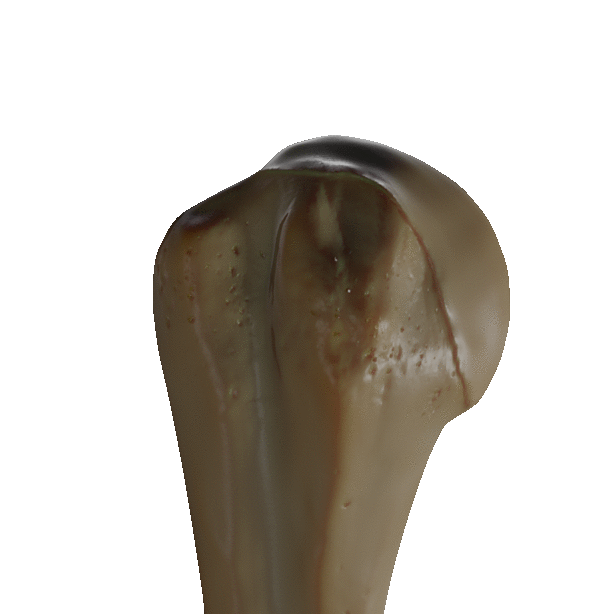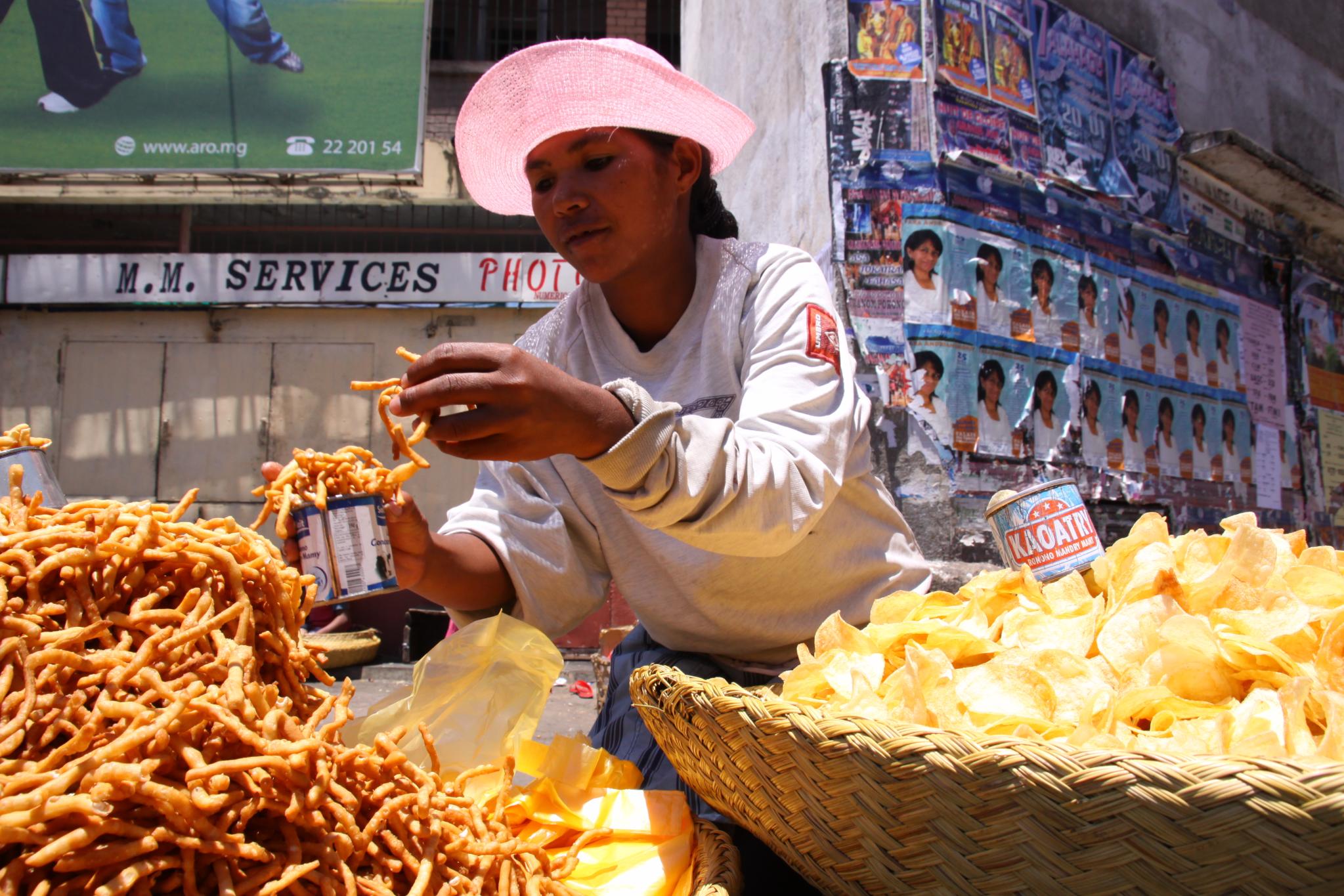|
Subfossil Lemurs
Subfossil lemurs are lemurs from Madagascar that are represented by recent ( subfossil) remains dating from nearly 26,000 years ago to approximately 560 years ago (from the late Pleistocene until the Holocene). They include both extant and extinct species, although the term more frequently refers to the extinct giant lemurs. The diversity of subfossil lemur communities was greater than that of present-day lemur communities, ranging to as high as 20 or more species per location, compared with 10 to 12 species today. Extinct species are estimated to have ranged in size from slightly over to roughly . Even the subfossil remains of living species are larger and more robust than the skeletal remains of modern specimens. The subfossil sites found around most of the island demonstrate that most giant lemurs had wide distributions and that ranges of living species have contracted significantly since the arrival of humans. Despite their size, the giant lemurs shared many fe ... [...More Info...] [...Related Items...] OR: [Wikipedia] [Google] [Baidu] |
Palaeopropithecus Maximus Skull 5
''Palaeopropithecus'' is a recently extinct genus of large sloth lemurs from Madagascar related to living lemur species found there today. Three species are known, ''Palaeopropithecus ingens'', ''P. maximus'', and ''P. kelyus''. Radiocarbon dates indicate that they may have survived until around 1300–1620 Common Era, CE. Madagascar, Malagasy legends of the ''Subfossil lemur#Lingering populations, tretretretre'' or ''tratratratra'' are thought to refer to ''P. ingens''. Evidence suggests a solely arboreal locomotion, arboreal lifestyle with frequent upside down suspension, hence the name sloth lemur. Anatomy ''Palaeopropithecus'' primarily lived in the trees to stay away from predators as well as to gain valuable resources. To survive properly in the trees, ''Palaeopropithecus'' had long and powerful arms and legs, each with significantly long fingers and toes to allow them to hang upside down on branches. These were used to swing from branch to branch to travel across the ju ... [...More Info...] [...Related Items...] OR: [Wikipedia] [Google] [Baidu] |
Pachylemur
''Pachylemur'' is an Subfossil lemur, extinct, giant lemur most closely related to the ruffed lemurs of genus ''Varecia''. Two species are known, ''Pachylemur insignis'' and ''Pachylemur jullyi'', although there is some doubt as to whether or not they may actually be the same species. ''Pachylemur'' is sometimes referred to as the giant ruffed lemur, because although it and the living ruffed lemurs had similar teeth and skeletons, ''Pachylemur'' was more robust and as much as three to four times larger. Molecular phylogenetics, DNA studies have confirmed a sister group relationship between these two types of lemur. Like living ruffed lemurs, ''Pachylemur'' specialized in eating fruit, and was therefore an important Seed dispersal, seed disperser, possibly for tree species with seeds too large for even ruffed lemurs to swallow. In the Madagascar spiny thickets, spiny thickets of southwestern Madagascar, they were also likely to have dispersed seeds evolved to attach to fur and be ca ... [...More Info...] [...Related Items...] OR: [Wikipedia] [Google] [Baidu] |
Sambirano Domain
The Sambirano region, also known as the Sambirano domain, is a biogeography, biogeographic region of northwestern Madagascar. It has a distinctive lowland climate with year-round rain, differing from the rest of seasonally-dry western and northern Madagascar. The climate supports humid lowland rainforests, with greater similarity to those of Madagascar lowland forests, eastern Madagascar than the Madagascar dry deciduous forests, dry deciduous forests characteristic of the Madagascar's western lowlands. Geography The region takes its name from the Sambirano River, which runs through the center of the region. The Sambirano region extends from the Ifasy River in the north to the Ampasindava Peninsula in the south, in the southwestern portion of Diana Region. It extends from the coast to the slopes of the Tsaratanana Massif, which bounds the region on the east. It also includes the islands of Nosy Be and Nosy Komba. Climate The region receives summer monsoon rains characteristic of ... [...More Info...] [...Related Items...] OR: [Wikipedia] [Google] [Baidu] |
Humerus
The humerus (; : humeri) is a long bone in the arm that runs from the shoulder to the elbow. It connects the scapula and the two bones of the lower arm, the radius (bone), radius and ulna, and consists of three sections. The humeral upper extremity of humerus, upper extremity consists of a rounded head, a narrow neck, and two short processes (tubercles, sometimes called tuberosities). The body of humerus, body is cylindrical in its upper portion, and more prism (geometry), prismatic below. The lower extremity of humerus, lower extremity consists of 2 epicondyles, 2 processes (trochlea of the humerus, trochlea and capitulum of the humerus, capitulum), and 3 fossae (radial fossa, coronoid fossa, and olecranon fossa). As well as its true anatomical neck, the constriction below the greater and lesser tubercles of the humerus is referred to as its Surgical neck of the humerus, surgical neck due to its tendency to fracture, thus often becoming the focus of surgeons. Etymology The word ... [...More Info...] [...Related Items...] OR: [Wikipedia] [Google] [Baidu] |
Long Bone
The long bones are those that are longer than they are wide. They are one of five types of bones: long, short, flat, irregular and sesamoid. Long bones, especially the femur and tibia, are subjected to most of the load during daily activities and they are crucial for skeletal mobility. They grow primarily by elongation of the diaphysis, with an epiphysis at each end of the growing bone. The ends of epiphyses are covered with hyaline cartilage ("articular cartilage"). The longitudinal growth of long bones is a result of endochondral ossification at the epiphyseal plate. Bone growth in length is stimulated by the production of growth hormone (GH), a secretion of the anterior lobe of the pituitary gland. The long bone category includes the femora, tibiae, and fibulae of the legs; the humeri, radii, and ulnae of the arms; metacarpals and metatarsals of the hands and feet, the phalanges of the fingers and toes, and the clavicles or collar bones. The long bones of the ... [...More Info...] [...Related Items...] OR: [Wikipedia] [Google] [Baidu] |
Cortical Bone
A bone is a rigid organ that constitutes part of the skeleton in most vertebrate animals. Bones protect the various other organs of the body, produce red and white blood cells, store minerals, provide structure and support for the body, and enable mobility. Bones come in a variety of shapes and sizes and have complex internal and external structures. They are lightweight yet strong and hard and serve multiple functions. Bone tissue (osseous tissue), which is also called bone in the uncountable sense of that word, is hard tissue, a type of specialised connective tissue. It has a honeycomb-like matrix internally, which helps to give the bone rigidity. Bone tissue is made up of different types of bone cells. Osteoblasts and osteocytes are involved in the formation and mineralisation of bone; osteoclasts are involved in the resorption of bone tissue. Modified (flattened) osteoblasts become the lining cells that form a protective layer on the bone surface. The mineralise ... [...More Info...] [...Related Items...] OR: [Wikipedia] [Google] [Baidu] |
Femur
The femur (; : femurs or femora ), or thigh bone is the only long bone, bone in the thigh — the region of the lower limb between the hip and the knee. In many quadrupeds, four-legged animals the femur is the upper bone of the hindleg. The Femoral head, top of the femur fits into a socket in the pelvis called the hip joint, and the bottom of the femur connects to the shinbone (tibia) and kneecap (patella) to form the knee. In humans the femur is the largest and thickest bone in the body. Structure The femur is the only bone in the upper Human leg, leg. The two femurs converge Anatomical terms of location, medially toward the knees, where they articulate with the Anatomical terms of location, proximal ends of the tibiae. The angle at which the femora converge is an important factor in determining the femoral-tibial angle. In females, thicker pelvic bones cause the femora to converge more than in males. In the condition genu valgum, ''genu valgum'' (knock knee), the femurs conve ... [...More Info...] [...Related Items...] OR: [Wikipedia] [Google] [Baidu] |
Diademed Sifaka
The diademed sifaka (''Propithecus diadema''), or diademed simpona, is an endangered species of sifaka, one of the lemurs endemic to certain rainforests in eastern Madagascar. Along with the indri, this species is one of the two largest living lemurs, with an average weight of 6.5 kg and a total adult length of approximately 105 centimetres (41 inches), half of which is its tail. Russell Mittermeier, one of the contemporary authorities on lemurs, describes the diademed sifaka as "one of the most colorful and attractive of all the lemurs", having a long and silky coat. ''P. diadema'' is also known by the Malagasy names simpona, simpony and ankomba joby. The term "diademed sifaka" is also used as a group species designation formerly encompassing four distinct subspecies. Description ''P. diadema'' is readily distinguished from all the other lemur species by its characteristic markings and large physical size. Its entire coat is moderately long, silky and luxuriant ... [...More Info...] [...Related Items...] OR: [Wikipedia] [Google] [Baidu] |
Indri
The indri (; ''Indri indri''), also called the babakoto, is one of the largest living lemurs, with a head-body length of about and a weight of between . It has a black and white coat and maintains an upright posture when climbing or clinging. It is monogamous and lives in small family groups, moving through the canopy, and is herbivorous, feeding mainly on leaves but also seeds, fruits, and flowers. The groups are quite vocal, communicating with other groups by singing, roaring and other vocalisations. Besides humans, it is the only mammal found that can use rhythm. It is a Diurnal animal, diurnal tree-dweller related to the sifakas and, like all lemurs, it is native to Madagascar. It is revered by the Malagasy people and plays an important part in their myths and legends with various stories in existence accounting for its origin. The main threats faced by the indri are habitat destruction and fragmentation due to slash and burn agriculture, fuelwood gathering, and logging. It ... [...More Info...] [...Related Items...] OR: [Wikipedia] [Google] [Baidu] |
Malagasy People
The Malagasy ( or ) are a group of Austronesian-speaking ethnic groups indigenous to the island country of Madagascar, formed through generations of interaction between Austronesians originally from southern Borneo and Bantus from Southeast Africa. Traditionally, the population have been divided into sub-ethnic groups. Examples include "Highlander" (ethnically mixed ancestry but more Austronesian and slightly less Bantu) ethnic groups such as the Merina and Betsileo of the central highlands around Antananarivo, Alaotra ''(Ambatondrazaka)'' and Fianarantsoa, and the "coastal dwellers" (predominantly Bantu with less Austronesian traits sometimes like mulatto) such as the Sakalava, Bara, Vezo, Betsimisaraka, Mahafaly, etc. The Merina are further divided into two subgroups. The “Merina A” are the Hova and Andriana, and have an average of 34% African ancestry (20% of which is Bantu and Yoruba). The second subgroup is the “Merina B”, the Andevo, who have an average ... [...More Info...] [...Related Items...] OR: [Wikipedia] [Google] [Baidu] |
Oral Tradition
Oral tradition, or oral lore, is a form of human communication in which knowledge, art, ideas and culture are received, preserved, and transmitted orally from one generation to another.Jan Vansina, Vansina, Jan: ''Oral Tradition as History'' (1985), reported statements from present generation which "specifies that the message must be oral statements spoken, sung or called out on musical instruments only"; "There must be transmission by word of mouth over at least a generation". He points out, "Our definition is a working definition for the use of historians. Sociologists, linguists or scholars of the verbal arts propose their own, which in, e.g., sociology, stresses common knowledge. In linguistics, features that distinguish the language from common dialogue (linguists), and in the verbal arts features of form and content that define art (folklorists)."Ki-Zerbo, Joseph: "Methodology and African Pre-history", 1990, ''UNESCO International Scientific Committee for the Drafting of a G ... [...More Info...] [...Related Items...] OR: [Wikipedia] [Google] [Baidu] |
Megafauna
In zoology, megafauna (from Ancient Greek, Greek μέγας ''megas'' "large" and Neo-Latin ''fauna'' "animal life") are large animals. The precise definition of the term varies widely, though a common threshold is approximately , this lower end being centered on humans, with other thresholds being more relative to the sizes of animals in an ecosystem, the spectrum of lower-end thresholds ranging from to . Large body size is generally associated with other traits, such as having a slow rate of reproduction and, in large herbivores, reduced or negligible adult mortality from being killed by predators. Megafauna species have considerable effects on their local environment, including the suppression of the growth of woody vegetation and a consequent reduction in wildfire frequency. Megafauna also play a role in regulating and stabilizing the abundance of smaller animals. During the Pleistocene, megafauna were diverse across the globe, with most continental ecosystems exhibiting s ... [...More Info...] [...Related Items...] OR: [Wikipedia] [Google] [Baidu] |







